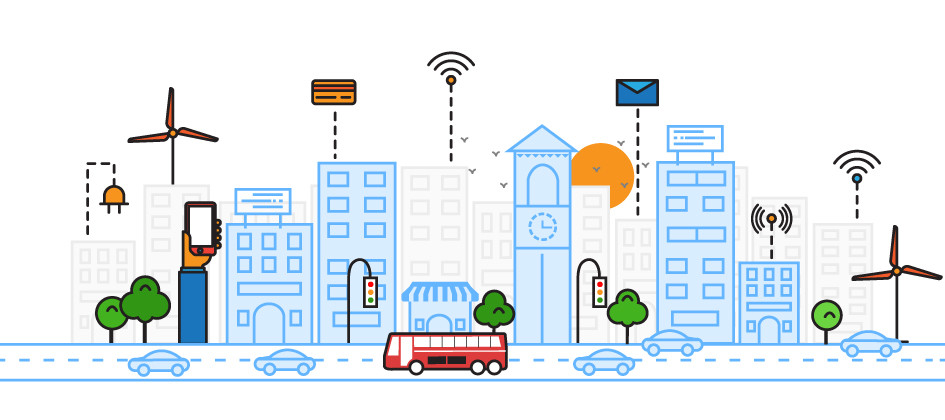As cities grow and populations rise, urban infrastructure faces increasing strain to meet the demands of modern life. From power and water supply to internet connectivity and waste management, efficient infrastructure is essential for vibrant, sustainable cities. Multi-utility providers—companies that bundle various utility services under one roof—are emerging as key players in transforming urban infrastructure by offering integrated solutions that drive efficiency, reduce costs, and enhance sustainability. Here’s a look at the role of multi-utility providers in reshaping urban landscapes.
Integrated Services for Enhanced Efficiency
Multi-utility providers offer a range of services, including electricity, water, gas, telecommunications, and waste management, all from a single source. By combining these services, they streamline operations, reduce redundancies, and improve service delivery. This integrated approach means fewer disruptions and more consistent service, enhancing the quality of life for residents and businesses alike. Centralised control and management systems make it easier to monitor usage and detect issues, ultimately leading to a more resilient and efficient infrastructure.
Supporting Smart City Development
The smart city model relies on data-driven, interconnected technologies to optimise urban living. Multi-utility providers play a crucial role in supporting this vision by implementing smart infrastructure that integrates with other urban systems. For example, smart metres for energy and water usage allow cities to collect real-time data, improve energy efficiency, and manage resources more effectively. By providing a unified platform for various utilities, multi-utility providers facilitate seamless data collection and analysis, which supports smarter decision-making for cities.
Driving Sustainability Initiatives
With climate change at the forefront of global concerns, sustainability is a top priority for modern cities. Multi-utility providers are well-positioned to support sustainable practices by implementing green technologies, renewable energy solutions, and efficient waste management systems. For example, by generating energy from waste or integrating renewable energy sources like solar and wind, they help cities reduce carbon footprints. Additionally, multi-utility providers often have the resources to invest in cutting-edge technology, such as energy-efficient grid systems and water conservation programs, helping cities become more sustainable and eco-friendly.
Reducing Costs for Consumers and Cities
Consolidating utilities through a multi-utility provider can result in significant cost savings for both consumers and cities. By managing several services through a single platform, providers reduce administrative expenses and maintenance costs, savings that can be passed on to end users. Multi-utility providers also often offer bundled service discounts, making essential utilities more affordable for consumers. For municipalities, these providers reduce infrastructure costs, streamline procurement processes, and make it easier to manage contracts—all of which translate into cost savings that can be allocated to other critical areas.
Improving Resilience Against Disruptions
In an age of frequent natural disasters and cyber threats, resilience is essential for urban infrastructure. Multi-utility providers enhance resilience by centralising control of essential services, which improves response times during disruptions. Their ability to quickly reallocate resources or reroute services during crises ensures that residents have continued access to essential utilities, even during emergencies. Moreover, these providers can integrate cybersecurity measures across the board, protecting urban infrastructure from potential threats and ensuring reliable service.
Simplifying the Customer Experience
Dealing with multiple utility providers can be overwhelming for consumers, involving different bills, customer service contacts, and often confusing payment processes. Multi-utility providers simplify the experience by offering a single point of contact, combined billing, and more flexible payment options. This streamlined process not only saves time but also improves overall customer satisfaction. Additionally, advanced customer portals allow residents to track their usage, pay bills, and request support with ease, adding transparency and convenience to the utility experience.
Innovating Through Advanced Technologies
Multi-utility providers are often early adopters of innovative technologies, from artificial intelligence (AI) and machine learning to IoT and blockchain. By implementing these advanced tools, they can optimise everything from resource distribution to predictive maintenance. For example, AI-driven demand forecasting can help balance energy grids and reduce outages, while IoT sensors allow providers to monitor infrastructure for potential issues in real time. These technologies not only improve efficiency but also enable cities to become more adaptable to future challenges.
Multi-utility providers are reshaping the future of urban infrastructure by delivering integrated, efficient, and sustainable solutions that support the growth and well-being of modern cities. Their contributions—spanning from cost savings and improved resilience to enhanced customer experience—make them indispensable partners for cities striving to become more sustainable, resilient, and smart. As the world’s urban population continues to expand, multi-utility providers will play a critical role in transforming urban infrastructure and paving the way for a more connected, sustainable future.
